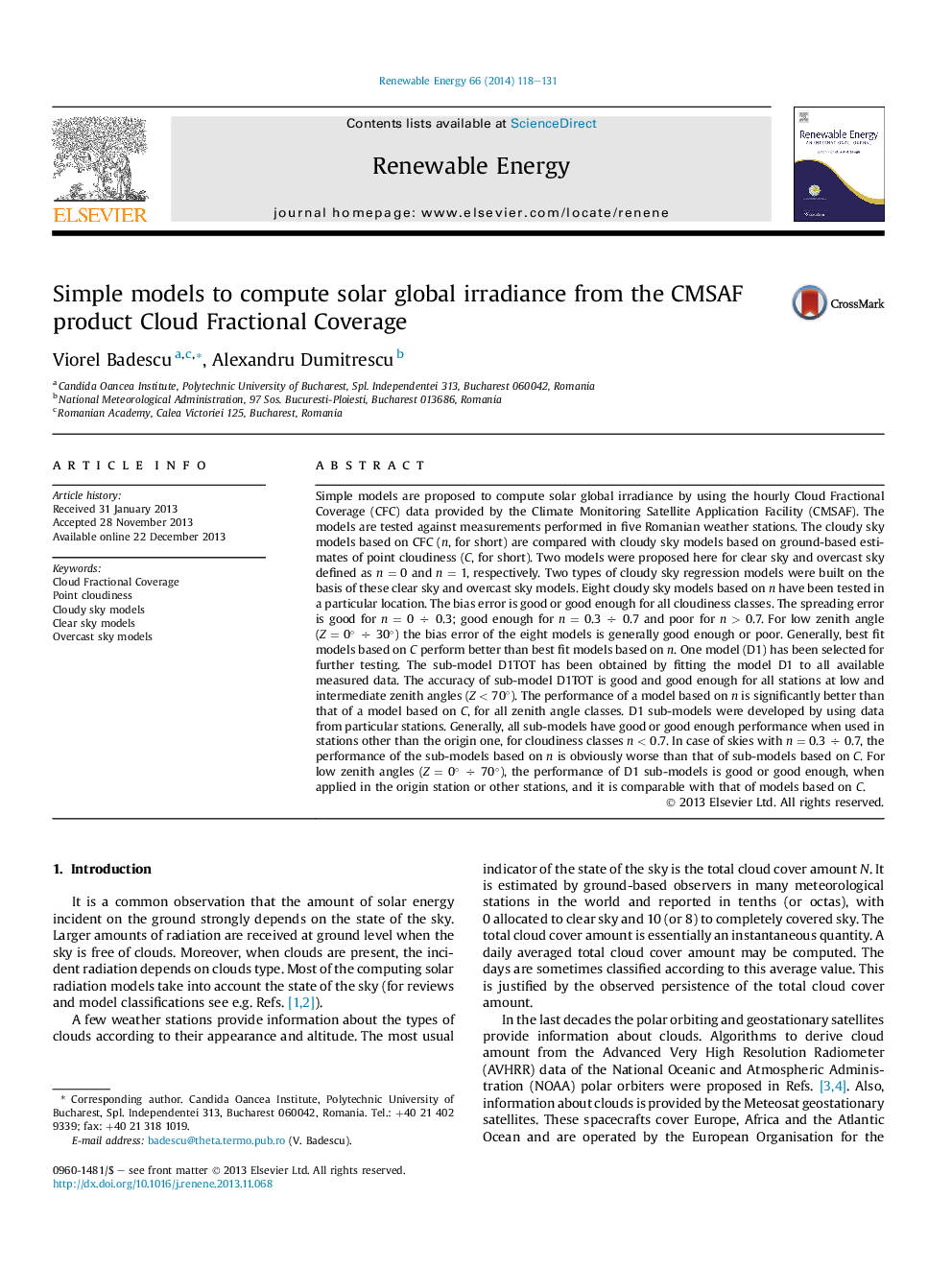| کد مقاله | کد نشریه | سال انتشار | مقاله انگلیسی | نسخه تمام متن |
|---|---|---|---|---|
| 6768484 | 512472 | 2014 | 14 صفحه PDF | دانلود رایگان |
عنوان انگلیسی مقاله ISI
Simple models to compute solar global irradiance from the CMSAF product Cloud Fractional Coverage
دانلود مقاله + سفارش ترجمه
دانلود مقاله ISI انگلیسی
رایگان برای ایرانیان
کلمات کلیدی
موضوعات مرتبط
مهندسی و علوم پایه
مهندسی انرژی
انرژی های تجدید پذیر، توسعه پایدار و محیط زیست
پیش نمایش صفحه اول مقاله

چکیده انگلیسی
Simple models are proposed to compute solar global irradiance by using the hourly Cloud Fractional Coverage (CFC) data provided by the Climate Monitoring Satellite Application Facility (CMSAF). The models are tested against measurements performed in five Romanian weather stations. The cloudy sky models based on CFC (n, for short) are compared with cloudy sky models based on ground-based estimates of point cloudiness (C, for short). Two models were proposed here for clear sky and overcast sky defined as n = 0 and n = 1, respectively. Two types of cloudy sky regression models were built on the basis of these clear sky and overcast sky models. Eight cloudy sky models based on n have been tested in a particular location. The bias error is good or good enough for all cloudiness classes. The spreading error is good for n = 0 ÷ 0.3; good enough for n = 0.3 ÷ 0.7 and poor for n > 0.7. For low zenith angle (Z = 0° ÷ 30°) the bias error of the eight models is generally good enough or poor. Generally, best fit models based on C perform better than best fit models based on n. One model (D1) has been selected for further testing. The sub-model D1TOT has been obtained by fitting the model D1 to all available measured data. The accuracy of sub-model D1TOT is good and good enough for all stations at low and intermediate zenith angles (Z < 70°). The performance of a model based on n is significantly better than that of a model based on C, for all zenith angle classes. D1 sub-models were developed by using data from particular stations. Generally, all sub-models have good or good enough performance when used in stations other than the origin one, for cloudiness classes n < 0.7. In case of skies with n = 0.3 ÷ 0.7, the performance of the sub-models based on n is obviously worse than that of sub-models based on C. For low zenith angles (Z = 0° ÷ 70°), the performance of D1 sub-models is good or good enough, when applied in the origin station or other stations, and it is comparable with that of models based on C.
ناشر
Database: Elsevier - ScienceDirect (ساینس دایرکت)
Journal: Renewable Energy - Volume 66, June 2014, Pages 118-131
Journal: Renewable Energy - Volume 66, June 2014, Pages 118-131
نویسندگان
Viorel Badescu, Alexandru Dumitrescu,